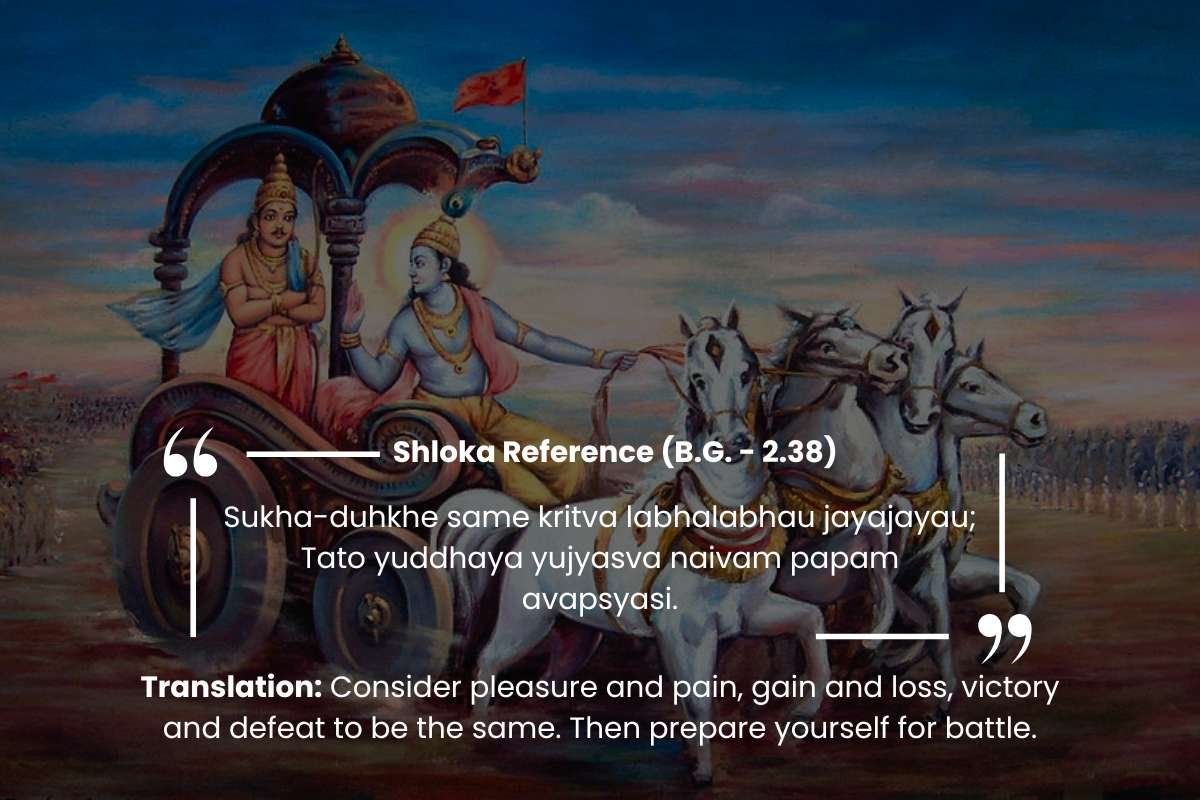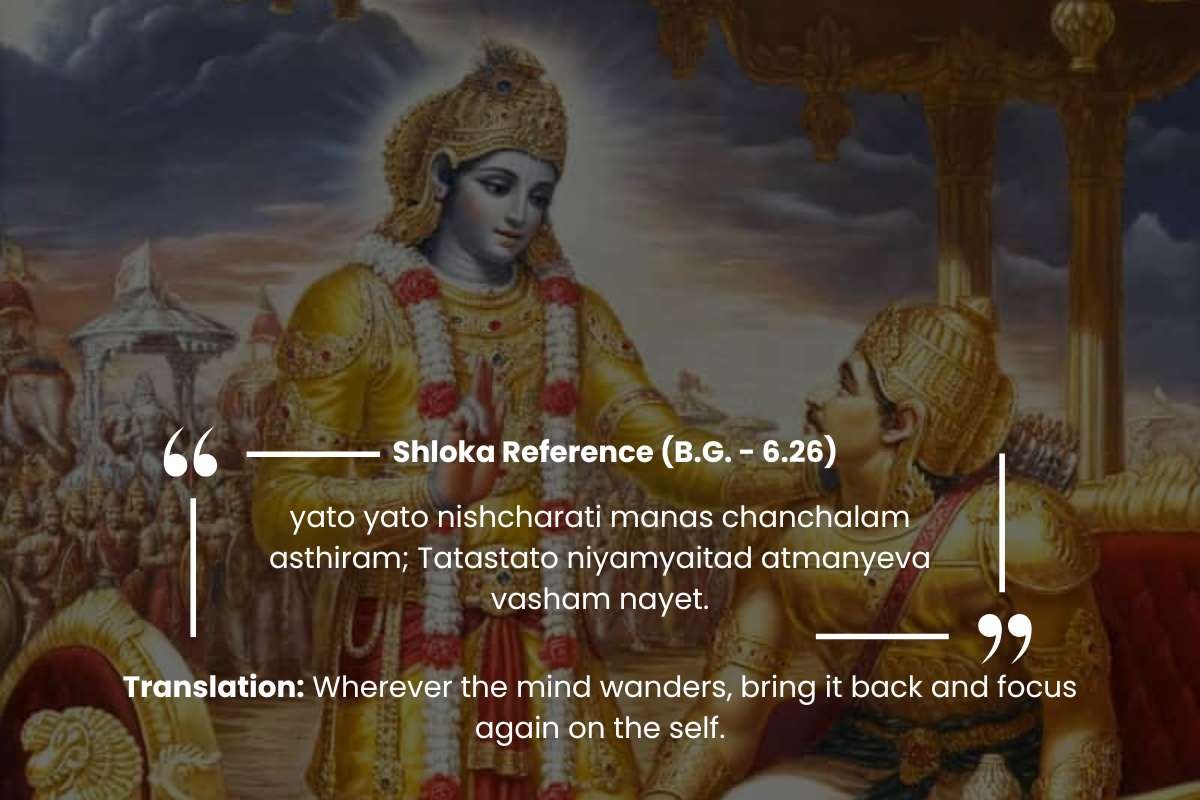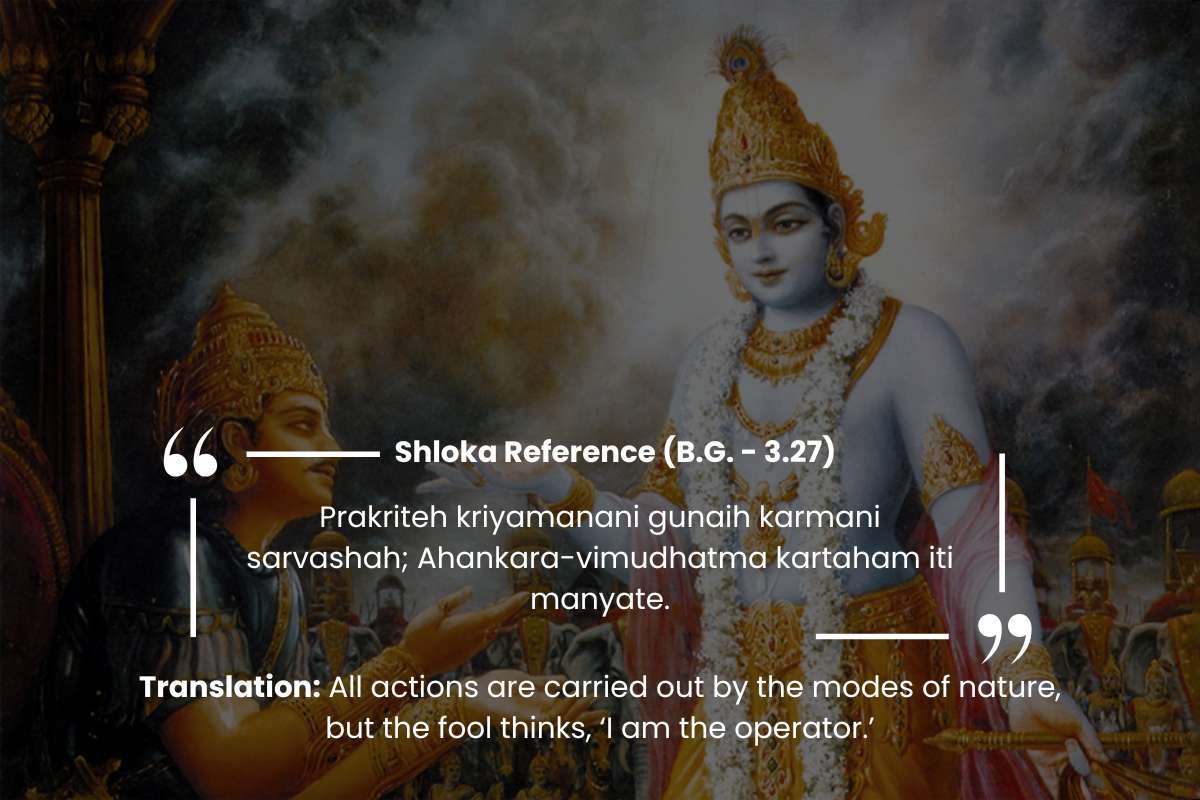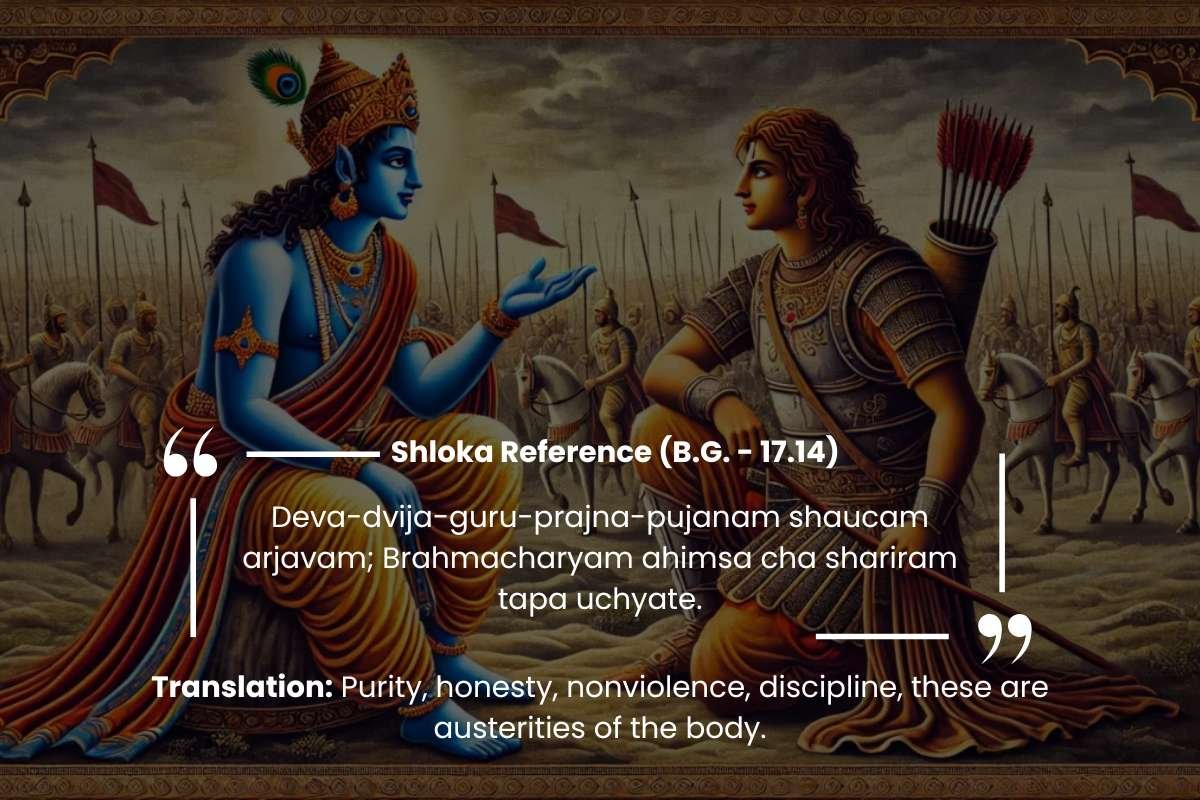The Bhagavad Gita offers timeless wisdom that can help us balance our work and personal lives. In this world, it is easy to feel overwhelmed with responsibilities. The teachings of the Gita help us understand how to manage stress, stay focused, and prioritize what truly matters, leading to a peaceful and productive life. Applying these ancient lessons can bring harmony to our daily work-life struggles. This article will explain how the Bhagavad Gita for work-life balance can offer practical, actionable insights supported by verses and real-world applications.
The Bhagavad Gita: A Guide beyond Religion
1. Do Your Duty without Attachment

“Karmanye vadhikaraste, Ma phaleshou kada chana, Ma karma phala hetur bhurmatey sangostva akarmani. ”
-Shloka Reference (B.G. – 2.47)
- Translation: You have a right to perform your prescribed duty, but you are not entitled to the fruits of your action.
- Meaning: This Shloka sets the foundation for the idea of detachment from results. In modern work environments, most stress comes from over-attachment to outcomes: promotions, salaries, recognition. The Bhagavad Gita for work-life balance teaches that while it is important to put in sincere effort, being emotionally tied to results leads to anxiety and burnout.
Real-Life Example:
Steve Jobs, in his Stanford address, talked about doing what you love without worrying too much about the outcome. He was removed from Apple, but instead of collapsing under stress, he went on to build NeXT and Pixar. His focus on the process over the result is a direct reflection of this Gita teaching.
2. Balance Comes from Inner Peace

“Uddhared atmanatmanam, natmanam avasadayet; Atmaiva hy atmano bandhur, atmaiva ripur atmanah. ”
Shloka Reference (B.G. – 6.5)
- Translation: Elevate yourself through your efforts. Do not degrade yourself. The mind can be the friend and also the enemy of the self.
- Meaning: This verse explains mental discipline. The Bhagavad Gita for work-life balance suggests that inner peace comes from controlling one’s mind and emotions. When the mind is steady, decisions become clear, and stress reduces.
Real-Life Example:
Indian entrepreneur Narayana Murthy built Infosys from scratch under stressful economic conditions. He attributes his calm decision-making to early morning meditation and inner discipline, both concepts deeply rooted in the Gita’s philosophy.
3. Don’t Let Success or Failure Shake You

“Sukha-duhkhe same kritva labhalabhau jayajayau; Tato yuddhaya yujyasva naivam papam avapsyasi. ”
Shloka Reference (B.G. – 2.38)
- Translation: Consider pleasure and pain, gain and loss, victory and defeat to be the same. Then prepare yourself for battle.
- Meaning: The Gita’s advice is clear: Stay balanced in all circumstances. The Bhagavad Gita for work-life balance stresses the importance of emotional neutrality, remaining stable when you win a contract or lose a deal.
Real-Life Example:
MS Dhoni, known for his composure, rarely reacts emotionally on the field. Win or lose, his calm behavior reflects the very attitude Krishna teaches Arjuna, calmness in success and failure.
Related Articles: Self-Improvement Tips by Gita You Can Start Using Today
4. Mindful Living over Multitasking

The modern workplace approves of multitasking. But does it help? According to Stanford University research, multitasking reduces productivity and increases stress. The Bhagavad Gita, which advocates work-life balance, subtly warns against mental fragmentation.
“yato yato nishcharati manas chanchalam asthiram; Tatastato niyamyaitad atmanyeva vasham nayet. ”
Shloka Reference (B.G. – 6.26)
- Translation: Wherever the mind wanders, bring it back and focus again on the self.
- Meaning: This speaks to the importance of mindfulness. When we focus on one task at a time, we improve quality and reduce anxiety.
Real-Life Example:
Google’s mindfulness program, “Search inside Yourself,” is inspired by Eastern philosophy, including the Bhagavad Gita. Employees are trained to be present and aware, leading to better focus and improved work-life balance.
5. Detachment from Ego

“Prakriteh kriyamanani gunaih karmani sarvashah; Ahankara-vimudhatma kartaham iti manyate. ”
Shloka Reference (B.G. – 3.27):
- Translation: All actions are carried out by the modes of nature, but the fool thinks, ‘I am the operator.’
- Meaning: This reminds us that ego is the root of stress. We carry a heavy mental load when we think everything depends on us alone. The Bhagavad Gita for work-life balance encourages humility. Let go of the ego, and you let go of unnecessary stress.
Real-Life Example:
Satya Nadella, CEO of Microsoft, once said, “Leadership is about bringing clarity, energy, and success to the team, not about your power.” His approach mirrors this Gita principle of detaching from ego for better team harmony and less personal pressure.
6. Living with Purpose (Dharma)

“Shreyan swadharmo vigunah, paradharmat swanushthitat; Swadharme nidhanam shreyah, paradharmo bhayavahah.”
Shloka Reference (B.G. – 18.47):
- Translation: It is better to fail in one’s duty than to succeed in the duty of another.
- Meaning: The Gita repeatedly highlights dharma, one’s duty. The Bhagavad Gita for work-life balance teaches that confusion and burnout often arise when we pursue jobs that conflict with our inner nature.
Real-Life Example:
Author Chetan Bhagat left his high-paying banking job to become a full-time writer. Despite initial criticism, he followed his dharma, which led to success and inner satisfaction. This is a direct application of the Bhagavad Gita for work-life balance.
Related Articles: 40 Timeless Bhagavad Gita Quotes to Change Your Perspective
7. Time Management and Sattvic Living

The Gita classifies actions into three gunas: sattva (purity), rajas (activity), and tamas (inertia). A sattvic lifestyle promotes balance.
“Deva-dvija-guru-prajna-pujanam shaucam arjavam; Brahmacharyam ahimsa cha shariram tapa uchyate. ”
Shloka Reference (B.G. – 17.14):
- Translation: Purity, honesty, nonviolence, discipline, these are austerities of the body.
- Meaning: A sattvic lifestyle includes waking up early, eating balanced meals, and staying mentally calm. The Bhagavad Gita for work-life balance advises lining up one’s routine with nature for better energy and productivity.
Real-Life Example:
Billionaire investor Ray Dalio practices Transcendental Meditation and follows a strict daily routine. His disciplined lifestyle is proof that sattvic habits lead to higher work efficiency and better balance.
Conclusion
In those days when professional life often spills into personal time, the teachings of Lord Krishna offer a roadmap to sanity. The Gita doesn’t suggest we give up our work, it teaches us how to work with balance, clarity, and peace. Here are the 5 main key points of the Bhagavad Gita for work-life balance :
- The Bhagavad Gita for work-life balance begins with detachment from outcomes.
- Time management through sattvic practices builds energy.
- Focus on effort, not results, another gem from the Bhagavad Gita for work-life balance.
- Don’t live by comparisons; follow your path.
- Inner calm reflects in outer success.
To Listen BhagvatGita:
FAQs:
1. Is it practical to apply the Bhagavad Gita’s spiritual principles in corporate or business settings?
Yes. Many corporate leaders use Gita-based practices like mindfulness, detachment, and ethical decision-making to maintain emotional balance and create a positive work culture.
2. How can the Bhagavad Gita help improve work-life balance in modern times?
The Bhagavad Gita offers timeless wisdom on detachment, duty, and inner peace, which can help professionals manage stress, set priorities, and maintain a balanced approach to work and personal life.
3. How does the Bhagavad Gita guide leaders in maintaining balance between work duties and personal life?
The Gita teaches that leadership should be rooted in self-awareness, compassion, and ethical action, which naturally fosters harmony between professional responsibilities and personal well-being.






